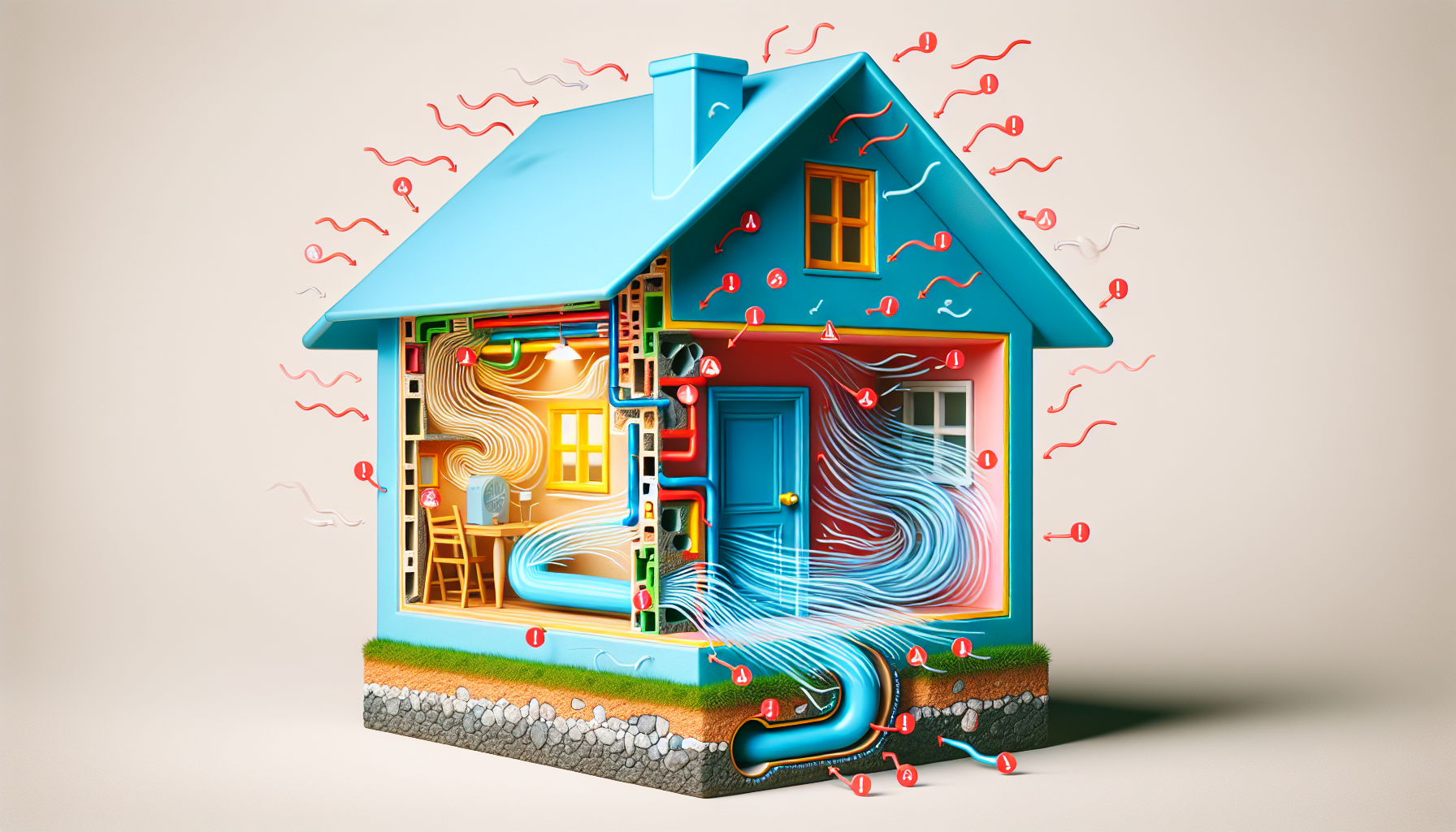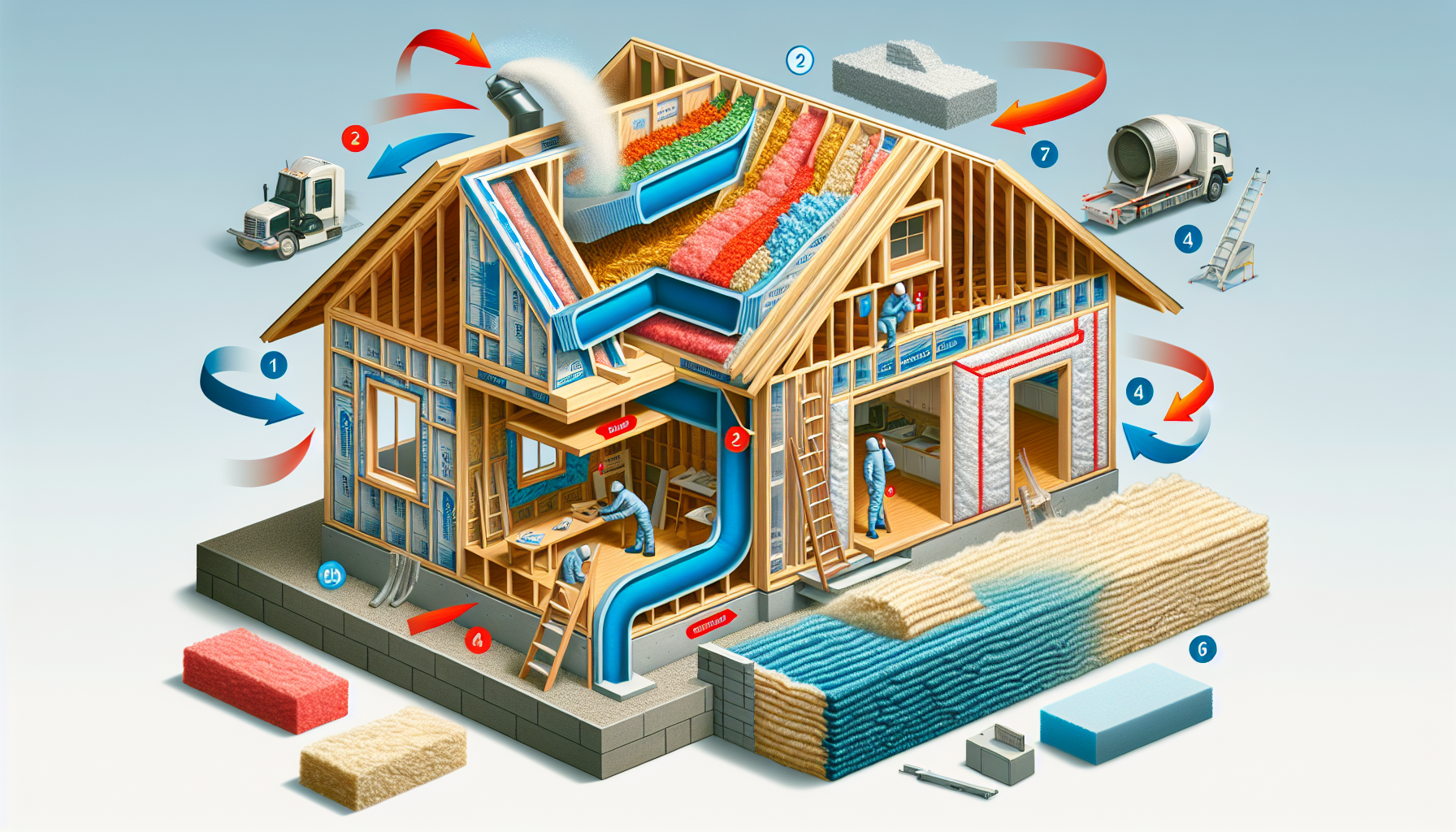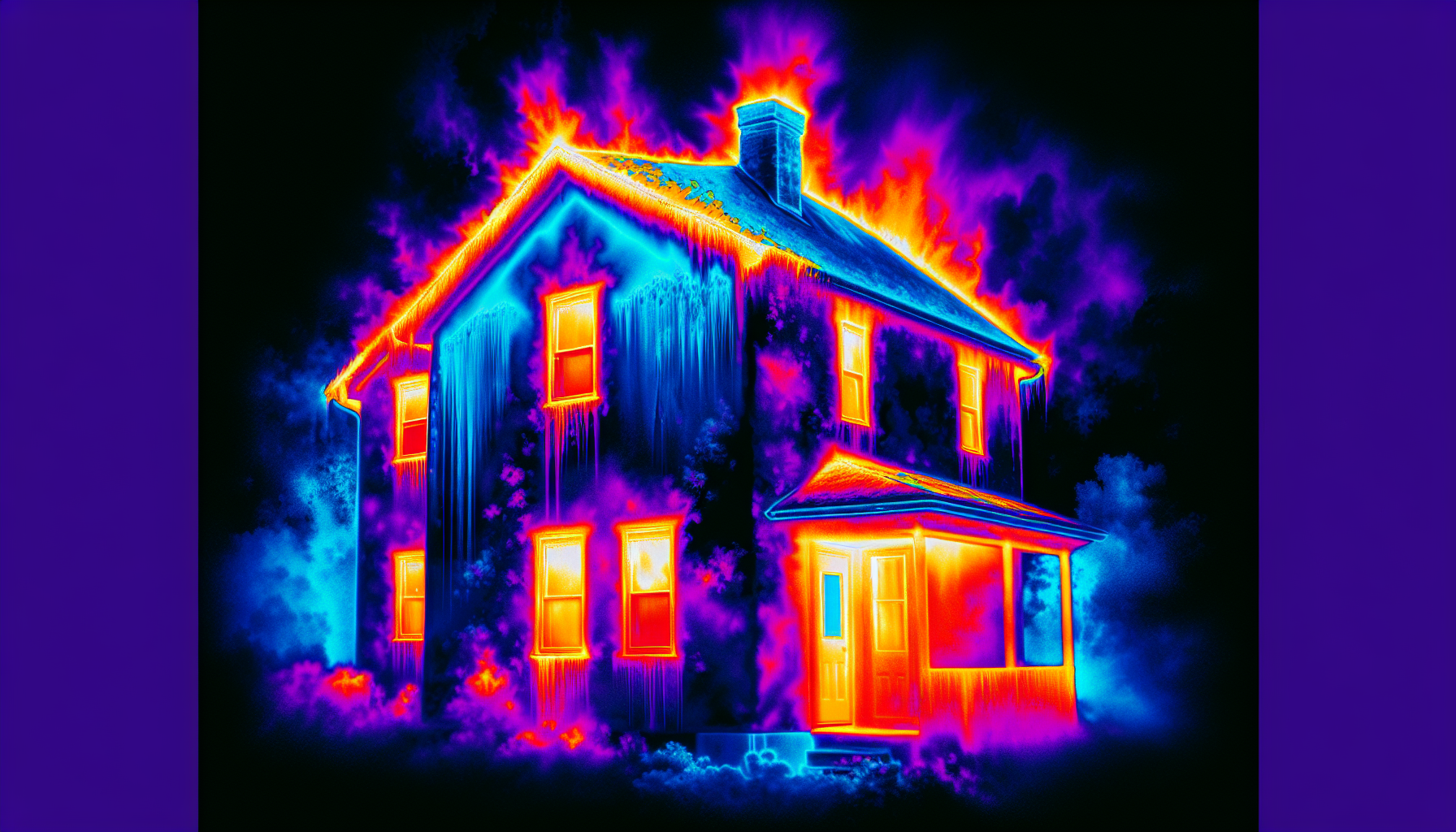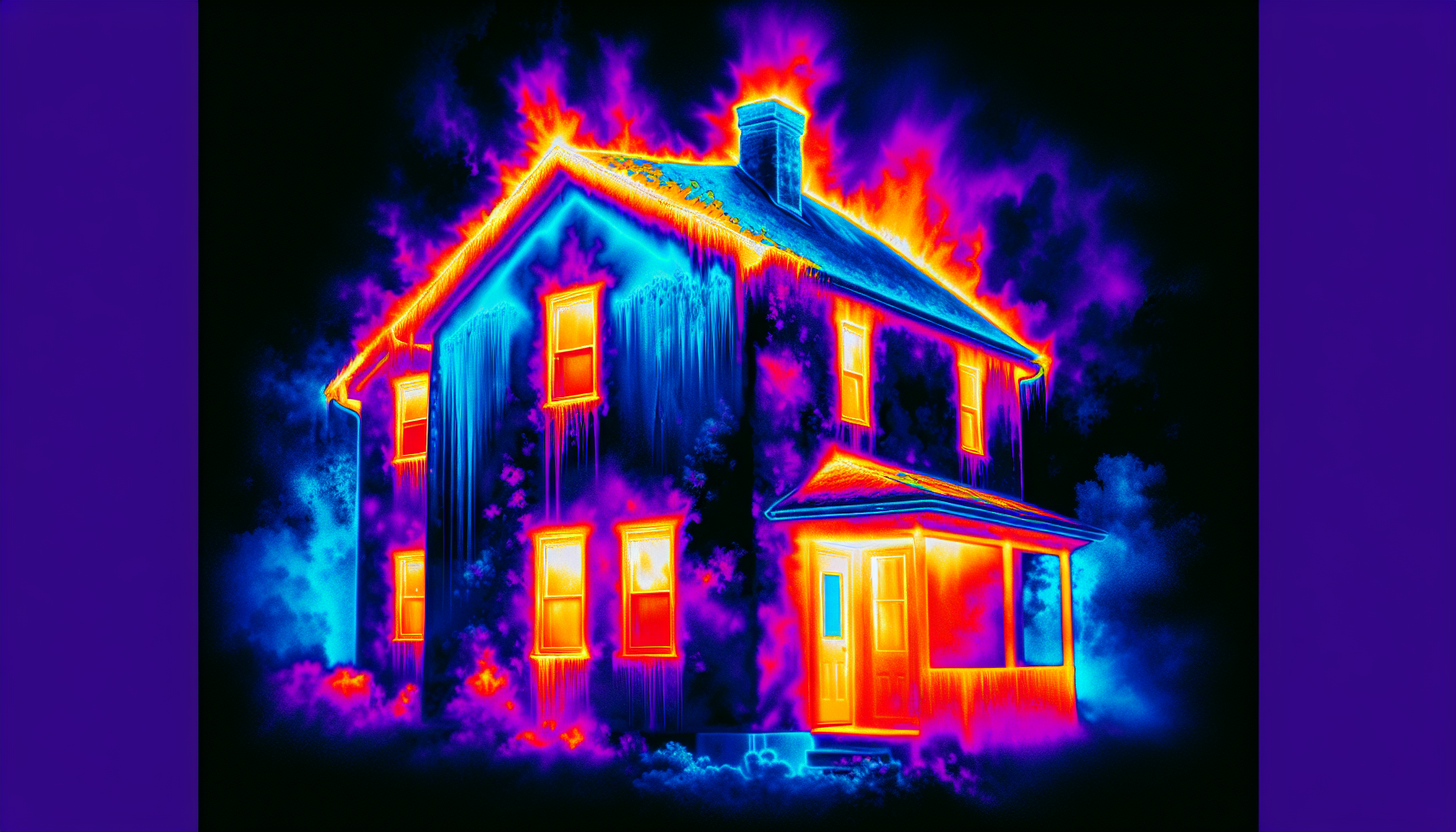Blower door results show how airtight your home is, indicating where energy losses might occur due to leaks. Understanding what is a good blower door test score is crucial, as it emphasizes the importance of air sealing in new constructions and remodels. These results help you understand key metrics like Air Changes Per Hour (ACH) and Cubic Feet Per Minute (CFM), offering insight into necessary home improvements. This article will help you decode these metrics and enhance your home’s energy efficiency.
Key Takeaways
- Blower door tests are essential for identifying air leaks in homes, which significantly impact energy efficiency, comfort, air quality, and building durability.
- Key metrics from blower door test results, including Air Changes Per Hour (ACH), Cubic Feet Per Minute (CFM), and test pressure, provide valuable insights into a home’s airtightness and areas for improvement.
- Professional blower door tests offer comprehensive analysis and actionable recommendations, which can lead to substantial energy savings and improved home performance compared to DIY methods.
- A good blower door test score is crucial for effective air sealing in new constructions and remodels. It typically involves developing an air-sealing plan and ensuring all penetrations are properly sealed to achieve optimal results.
Maximizing Energy Efficiency Through Blower Door Results

A blower door test is a diagnostic tool that measures how airtight or insulated a home is by determining how much air is leaking outside, causing energy loss. The test involves:
- Fitting a blower door to the frame of an exterior door
- Equipping the blower door with a giant fan and motor that sucks air out of the home
- Measuring the difference in air pressure between the inside and outside via digital gauges
- Pressurizing or depressurizing the interior space to detect air leaks
A good blower door test score indicates minimal air leakage, which is crucial for effective air sealing in new constructions and remodels. This score helps ensure energy efficiency and indoor comfort.
The blower door test primarily aims to pinpoint uncontrolled outdoor air infiltration and indoor air exfiltration, key factors in enhancing energy efficiency, comfort, air quality, and building durability. Locating and rectifying these leaks help homeowners evade issues like moisture condensation, uncomfortable drafts, and inflated energy bills caused by air leaks. Moreover, blower door tests ensure that indoor air quality is not excessively contaminated by indoor pollutants.
Blower door tests are not just about identifying leaks but also about enhancing the overall energy performance of a home. They help determine if mechanical ventilation is needed for acceptable fresh air and indoor air quality. In essence, these tests provide a comprehensive understanding of a home’s energy performance, guiding homeowners towards effective solutions to conserve energy and improve indoor comfort.
Introduction
During the blower door test, a blower door is attached to the front or back door frame to assess the airtightness of a building. This helps in identifying areas that may need sealing or insulation. This equipment has a giant fan and motor that sucks out air from the home and measures the difference in air pressure between the inside and outside of the home via digital gauges. The test’s purpose is to gauge a home’s airtightness level, a vital aspect in curbing energy consumption due to excess air leakage. A good blower door test score indicates effective air sealing, which is crucial for energy efficiency and moisture control in new constructions and remodels.
Conducting a blower door test helps pinpoint air leaks, significantly improving a home’s energy efficiency by reducing energy consumption and costs. These tests provide assurance that target air leakage rates are met, ensuring energy savings and moisture control.
Proper building tightness can:
- Avoid moisture condensation problems
- Prevent uncomfortable drafts caused by air leaks
- Control outdoor contaminants, pests, and odors from entering the home.
Decoding Blower Door Test Results
Blower door test results can be interpreted using several key metrics, each providing valuable insights into a home’s airtightness and energy performance. Understanding these results is essential for homeowners looking to improve their energy efficiency. The primary metrics include Air Changes Per Hour (ACH), Cubic Feet Per Minute (CFM), and test pressure measurements. A good blower door test score typically indicates low ACH and CFM values, signifying effective air sealing and minimal air leakage.
ACH measures how often the air inside a home is replaced with outside air in one hour, providing a clear indicator of how leaky a home is. CFM measures the volume of air leakage, indicating how much air escapes the home during the test. Finally, test pressure, typically measured at 50 Pascals, helps assess airtightness under simulated wind force conditions.
Air Changes Per Hour (ACH) Explained
ACH measures how often the air inside a home is completely replaced with outside air in one hour. This metric is crucial for identifying how often the air inside a home is replaced with outside air, which helps homeowners understand the extent of air leakage. A higher ACH indicates a leakier home, while a lower ACH suggests better airtightness. A good blower door test score typically falls below 3 ACH for new constructions and remodels, indicating effective air sealing.
Blower door test scores can be interpreted based on ACH measurements by dividing the blower test score by the ACH number to determine how leaky a home is. For instance, if a home has an ACH of three, it means the air inside is replaced about every three hours, providing a clear indicator of how much air is leaking and where improvements can be made.
Cubic Feet Per Minute (CFM) Overview
CFM measures the volume of air leakage during a blower door test, indicating how much air is escaping the home. This metric is essential for understanding the overall air tightness of a home. Energy auditors use blower doors with variable-speed fans, pressure gauges, and airflow manometers to measure a home’s air infiltration rate.
For effective interpretation of blower door test scores, aim for a CFM below the square footage of the home. For example, if a home has 2,000 square feet of living space, the goal would be to achieve a CFM value below 2,000 to ensure minimal air leakage and improved energy efficiency. A good blower door test score reflects proper air sealing, which is crucial in new constructions and remodels.
Interpreting Test Pressure Results
Test pressures in blower door tests are measured using digital pressure gauges, which are critical for determining air leakage accurately. The standard test pressure is typically measured at 50 Pascals, simulating wind force conditions to assess airtightness. This ensures that the test pressure is accurately measured, thereby providing precise air leakage results. A good blower door test score at this pressure indicates minimal air leakage, which is essential for energy efficiency and comfort in new constructions and remodels.
Using digital pressure gauges ensures that the test pressure is accurately measured, thereby providing precise air leakage results. This level of precision is crucial for homeowners looking to make targeted improvements to their home’s energy efficiency based on blower door test results.
Identifying Common Air Leak Locations

A blower door test helps identify unsealed cracks in a house’s shell which can lead to energy loss and higher energy bills. Common air leak locations include windows, doors, plumbing penetrations, and HVAC systems. Visual inspection can help find air leaks by checking all exterior corners, outdoor water faucets, and areas where siding and chimneys meet. A good blower door test score indicates minimal air leakage, which can be achieved by identifying and sealing these common air leak locations.
Inside the home, air leaks can often be found around:
- electrical outlets
- switch plates
- door and window frames
- attic hatches
Identifying these common air leak locations is crucial for homeowners looking to improve their home’s airtightness and overall energy efficiency.
Windows and Doors
Windows and doors are significant sources of air leaks if not properly sealed. Daylight visible around a door or window frame indicates air leaks. Gaps in these areas allow outside air to enter and indoor air to escape, contributing to high air leakage rates and letting in all the air.
Rattling windows and doors often signal air leakage. Drafty windows can be identified by their ability to rattle, indicating possible air leakage. Properly sealing these leaks can significantly improve a home’s airtightness and energy efficiency.
Plumbing and Electrical Penetrations
Gaps around pipes and wires are common sources of air leaks. These gaps allow outside air to enter and inside air to escape, reducing the overall energy efficiency of a home. Gaps around dryer vents and pipes where they pass through walls are common air leak locations.
Air leaks can also occur around electrical and gas service entrances and cable TV or phone lines. Sealing these gaps effectively can significantly reduce air leakage and improve the overall energy performance of a home.
HVAC Systems and Ductwork
Leaky ductwork in HVAC systems significantly contributes to air leakage and can affect their efficiency. Improperly sealed vents and fans are common sources of air leaks, and areas where HVAC equipment connects to ducts are critical points to inspect for air leaks.
Augmenting the airtightness of HVAC systems and ductwork can notably boost a home’s energy performance. Ensuring that all connections are properly sealed and that ducts are in good condition is essential for maintaining energy efficiency and reducing air leakage.
Improving Your Blower Door Test Score
Improving blower door test scores involves sealing air leaks, enhancing insulation, and upgrading HVAC equipment. The test report lists all areas of the home where drafts were found, allowing homeowners or builders to pinpoint the areas that need to be sealed. Seal the leaks and tackle most of the repairs themselves. A good blower door test score indicates minimal air leakage, which is crucial for energy efficiency in new constructions and remodels. To achieve a successful blower door test, develop an air-sealing plan and ensure all penetrations are properly sealed.
Using casement and awning windows instead of sliding ones can improve airtightness. Opt for structural insulated panels (SIPs) or insulated concrete forms (ICFs) for wall structures to achieve better results. Balloon-framing exterior walls parallel to floor joists can enhance airtightness.
Sealing Air Leaks

Various methods, including caulking, weatherstripping, and duct sealing can be employed to seal air leaks. Weather stripping around doors and fireplace dampers are common areas for air leaks. In older homes, air-sealing work often focuses on basements, crawlspaces, and attics where the stack effect is strongest.
Subtle leaks can be detected using a smoke pencil, smoke bottle, or incense stick during air-sealing. Caulking and weather stripping can seal leaks around windows and doors. Proper sealing of ducts can improve the overall airtightness of a home.
Enhancing Insulation

Enhancing insulation involves using materials like SIPs, ICFs, and dense-packed cellulose to reduce air leakage. Using SIPs or ICFs for wall structures provides consistent and higher insulation levels. Using dense-packed cellulose in empty stud bays can significantly reduce air leakage through walls.
A SIP roof minimizes air leaks better than stick-framed roofs, thus enhancing insulation. Professional insulation installation or replacement in attics or crawlspaces is often recommended to address significant air leaks identified during blower door tests.
Upgrading HVAC Equipment
Upgrading HVAC systems can minimize air leaks and improve overall energy performance. Blower door tests determine the proper sizing and airflow requirements for heating and cooling equipment. Select HVAC equipment that is designed to minimize air leaks and ensure proper sealing.
Upgrading HVAC systems can help to:
- Minimize air leaks
- Improve overall energy performance
- Lead to better HVAC efficiency
- Lower energy consumption
This contributes to a more energy-efficient home.
The Role of an Energy Auditor
Energy auditors conduct the following tasks:
- Blower door tests to measure air leakage in homes
- Thermal inspections to identify areas of heat loss or gain
- Provide recommendations for energy efficiency improvements
Professional energy auditors use blower door tests to measure air leakage in homes, which helps them assess the building’s energy efficiency. A good blower door test score indicates minimal air leakage, which is crucial for energy efficiency. Energy auditors can help achieve this by developing an air-sealing plan and ensuring all penetrations are properly sealed.
Energy auditors analyze blower door test results to provide recommendations for sealing gaps and improving overall energy performance. By identifying areas for energy efficiency improvements, energy auditors play a crucial role in helping homeowners reduce energy consumption and improve comfort.
Conducting Energy Audits
Energy audits involve blower door testing, inspections, and data analysis to identify energy inefficiencies. The process of an energy audit typically includes setting up a blower door test by attaching an airtight fan to a doorframe and depressurizing the living space.
Auditors may use smoke pencils during blower door tests to detect specific air leaks. An energy audit typically involves a detailed examination of a home’s energy usage, including blower door testing to measure air infiltration rates.
Thermal Inspections

Thermal inspections use infrared cameras to locate air leaks and insulation gaps. Thermal imaging cameras detect differences in apparent temperatures, making it easier to locate air leaks and insulation gaps during an energy audit. This method highlights hidden areas where air leakage occurs, contributing to improved energy efficiency.
Using blower door equipment in conjunction with thermal imaging enhances the detection of air leaks by forcing air through cracks and holes. By creating a temperature difference between the interior and exterior of a house, thermal imaging can pinpoint areas with poor insulation, ensuring precise identification and remediation of energy inefficiencies.
Recommendations for Energy Efficiency
Energy auditors provide recommendations based on blower door test results to improve energy efficiency. A professional blower door test often includes a comprehensive report detailing the air leakage points and recommendations for improvement. These recommendations are crucial for homeowners looking to make informed decisions about energy efficiency upgrades.
Blower door tests can enhance indoor air quality by:
- Detecting and addressing air leaks that may introduce pollutants
- Following an energy auditor’s recommendations to achieve long-term energy savings
- Creating a more comfortable living environment.
DIY vs. Professional Blower Door Testing
DIY blower door tests can be less accurate than professional tests but may be more cost-effective for repeated use. DIY blower door tests are typically less accurate compared to professional tests due to potential errors and lack of specialized equipment. However, they can be beneficial for homeowners who want to conduct regular checks and minor improvements themselves.
Hiring a professional for a blower door test can be more expensive, but it provides a thorough analysis and expert recommendations. Some benefits of professional blower door testing services include:
- Comprehensive insights into your home’s energy efficiency
- Expert recommendations for improving energy efficiency
- Potential for significant energy savings in the long run
A good blower door test score indicates effective air sealing, which is crucial for new constructions and remodels. Professional testing can help achieve this by developing an air-sealing plan and ensuring all penetrations are properly sealed.
While there may be a higher upfront cost, the investment in a professional blower door test can pay off in terms of energy savings and a more efficient home.
DIY Blower Door Tests
DIY blower door tests involve using portable fans and gauges to measure air pressure differences in the home. A DIY blower door test is conducted by homeowners to pinpoint leaky areas of the home, helping identify specific areas that need air sealing to improve energy efficiency. Equipment needed for a DIY blower door test includes a blower door fan, a manometer, and mounting panels for doors.
To perform a DIY blower door test, ensure all windows and doors are closed, and all air vents and fans are sealed. Although DIY tests may not be as precise as professional ones, they provide a practical approach for homeowners to regularly monitor and address air leaks.
Professional Blower Door Services
Professional blower door tests offer comprehensive analysis, expert advice, and results compliant with codes. Professionals performing blower door tests are usually certified and trained to provide accurate results and recommendations. A thorough report from a professional blower door test can guide homeowners on the best ways to enhance their home’s energy efficiency.
Professional blower door tests deliver code-compliant and energy-efficient results, often necessary for building inspections. By identifying and addressing air leaks, professional tests can significantly improve indoor air quality and overall home performance.
Cost Considerations for Blower Door Testing
Blower door testing costs vary based on factors like home size, complexity, and location, but can lead to significant energy savings. The average cost for a blower door test ranges from $200 to $450 for a standard single-family home. Prices can exceed $800 for larger homes or multi-unit buildings, especially if the architectural features are complex. A good blower door test score indicates minimal air leakage, which is crucial for energy efficiency in new constructions and remodels.
Investing in blower door tests can lead to substantial savings on energy bills. Addressing air leaks identified by blower door tests can significantly reduce utility bills, contributing to long-term energy savings.
Improving home airtightness can lead to better HVAC efficiency and lower energy consumption, making the initial cost of the test worthwhile.
Factors Affecting Costs
The size of the home significantly influences the cost of a blower door test, with larger homes requiring more resources and time. Complex architectural designs can also increase the cost due to the additional time required for testing.
Regional labor rates and local demand for blower door testing services can cause cost variations by location.
Potential Savings
Blower door tests can result in savings of up to 15% on heating and cooling costs. Energy Star reports achieving energy savings of up to 15% through effective air sealing. These savings can offset the initial investment in the blower door test, making it a cost-effective solution for long-term energy efficiency.
Improving home airtightness has several benefits:
- Reduces energy consumption
- Enhances the efficiency of HVAC systems
- Achieves significant savings
- Creates a more comfortable living environment.
Summary
Blower door tests are an invaluable tool for homeowners looking to maximize their home’s energy efficiency. By identifying and addressing air leaks, these tests help reduce energy consumption, improve comfort, and enhance indoor air quality. Key metrics such as ACH, CFM, and test pressure results provide a comprehensive understanding of a home’s airtightness. A good blower door test score indicates effective air sealing, which is crucial for energy efficiency in new constructions and remodels. Learn more about how blower door test companies can help you achieve these results.
Taking action based on blower door test results, whether through DIY efforts or professional services, can lead to substantial energy savings. Investing in these tests and implementing the recommended improvements can transform your home into a more energy-efficient and comfortable space.
Frequently Asked Questions
What is a blower door test?
A blower door test measures a home’s airtightness by using a calibrated fan to create a pressure difference and reveal air leakage. It is a commonly used method to assess energy efficiency and identify areas for improvement.
How does a blower door test improve energy efficiency?
A blower door test improves energy efficiency by identifying and sealing air leaks, which reduces energy consumption and improves overall comfort in the home.
What are common air leak locations in a home?
Common air leak locations in a home include windows, doors, plumbing and electrical penetrations, and HVAC systems. Proper sealing and insulation can help address these issues.
Can I perform a blower door test myself?
While DIY blower door tests are possible, they may be less accurate than professional tests due to potential errors and lack of specialized equipment. It’s best to consider hiring a professional for accurate results.
How much does a blower door test cost?
A blower door test for a standard single-family home typically costs between $200 and $450, with additional charges for larger or more complex homes.


Add a Comment